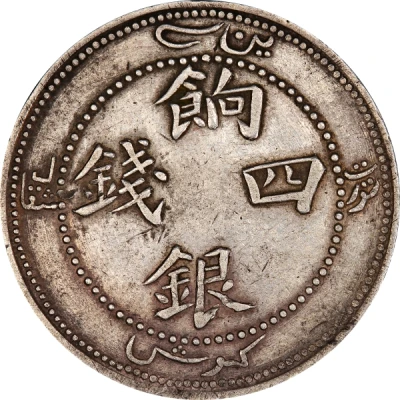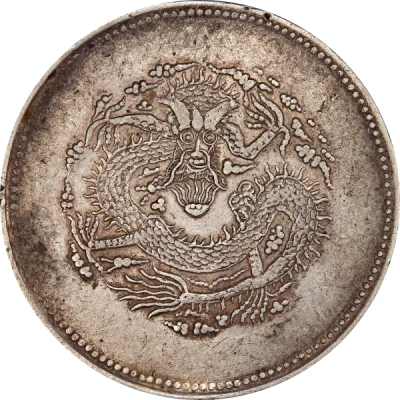4 Mace - Guangxu Pattern; "SUNGAREI"; brass ND
1897 year| Brass | - | - |
| Issuer | Sinkiang Province |
|---|---|
| Emperor | Guangxu (1884-1908) |
| Type | Pattern |
| Year | 1897 |
| Value | 4 Mace (0.4) |
| Composition | Brass |
| Shape | Round |
| Orientation | Medal alignment ↑↑ |
| Demonetized | Yes |
| Updated | 2024-10-03 |
| Numista | N#292122 |
|---|---|
| Rarity index | 100% |
Reverse
Dragon with pearl at centre surrounded by English legend.
Script: Latin
Lettering:
SUNGAREI
4 MACE
Engraver: Otto Bleh
Comment
While Krause lists these as being struck in 1906, recent evidence shows these were made from Otto Bleh dies, who struck some patterns for varies Chinese provinces between 1897 and 1899. Denominations of 1 Mace, 2 Mace, 4 Mace, and 1 Yuan (7 Mace and 2 Candareens) are known, with the last two denominations only known by patterns.Only the 1 Mace and 2 Mace denominations were released into circulation, with very few known to exist today.
Interesting fact
One interesting fact about the Pattern 4 Mace - Guangxu (Pattern; "SUNGAREI"; brass) ND (1897) from Sinkiang Province made of Brass is that it is a rare and unique coin that was minted during the Guangxu period of the Qing dynasty in China. The coin features a pattern of four mace, which is a traditional Chinese symbol of good luck and prosperity, and the word "SUNGAREI" in Manchu language, which means " Auspicious Mace". The coin was minted in the Sinkiang Province, which is now known as Xinjiang Uyghur Autonomous Region, and it is made of brass, which is a copper and zinc alloy. This coin is considered as a valuable collectible item among numismatists and historians, and it is a great example of the rich cultural heritage of China.

